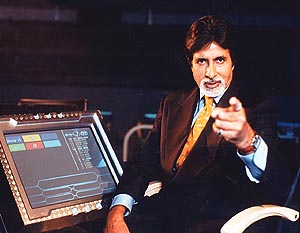Mera/meri/mere - my
Humara/humari/humare- our [sometimes "my," if a person prefers the "royal we"]
Tera/teri/tere - your [intimate]
Tumhara/tumhari/tumhare- your [regular]
Aapka/aapki/aapke- your [respectful]
Uska/uski/uske- his/her
Unka/unki/unke- their
Ka/ke/ki is a post-position, generally indicating that the term following it is owned by the one preceding it.
* Tere Mere Sapne- Your and My Dreams
* Dil Hain Tumhara- The Heart is Yours
Then there are plenty of songs employing these words, such as:
* Aisa Des Hain Mera- My Country Is Like This (Listen here)
* Main Ishq Uska- I Am Her Love (Listen here)
Now let's piece together some sentences.
* Kya yeh tumhara ghar hain? -> Is this your house?
* Yeh mera sapna hain. -> This is my dream.
* Unke kapde bahut sundar hain. -> Their clothes are very beautiful.
Let's end this lesson with the brilliant song, "Teri kurti sexy lagti hain," which in this case means, "Your kurti (Indian blouse) looks sexy." "Lagna" can mean many things in different context, which we will take up next time. Listen here and enjoy.
Please let me know if this lesson was at all helpful, and let me know if there is anything in particular you want to learn.


 In July 2000, Bollywood superstar
In July 2000, Bollywood superstar  Today's vocabulary lesson is inspired by a 2004 Bollywood blockbuster,
Today's vocabulary lesson is inspired by a 2004 Bollywood blockbuster,